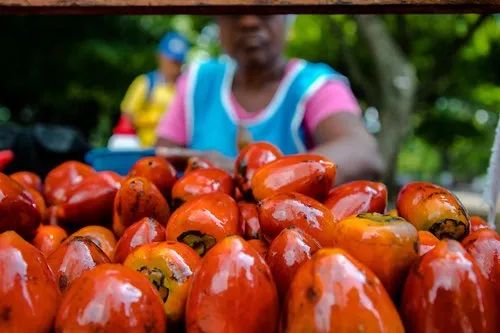The World Capital Of Salsa: Cali, Colombia

Standing in the dark and quiet hall with a bar up front within La Topa Tolondra, the crowd gathers quietly when suddenly the music erupts over the speakers, and couples in the group instantaneously break out dancing the salsa. As men and women dance with energetic feet and bodies, at times spinning and twirling around the dance floor, it is an impressive display of the relatively new dance. There are all ranges of expertise, from beginners dancing the basic moves of salsa (myself included) to experts who have taken these basic moves and made them into what seems magic. The fast-moving bodies of the dancers are quite impressive, and you can see how these people come out to dance nightly in various bars around town. This dance isn't a show for others, but rather a way for them to let the energy overtake their soul each night. Dancers change partners between songs (and sometimes fluidly during the song) and match the rhythm with their counterpart. It is clear to see the passion this city has for the dance that they've evolved entirely into a style of their own. Honestly, I wish I had a few shots of this world but I was learning the basic moves and want you to come see it for yourself.
Santiago de Cali (better known as simply "Cali"), Colombia is designated as the "Salsa Capital" of the world, and those who live here have the dance engrained into the essence of their culture. Though it is the epicenter of this dance, it is not where the dance originated. Salsa initially began in Cuba, but in the 70's the dance was brought to New York City and a new type of Salsa was invented by the feet and moves of Cubans, Puerto Ricans, and New Yorkers. Along with new moves, the unique style of dance was accompanied by a new sound, using more horns than the traditional percussion-heavy music of the original Salsa. The dance was then brought back to Cali by some Colombian sailors, and over time the Cali-style evolved into the impressive dance it is today.
Beyond Salsa, Cali has a complicated history much like the rest of the country. Located at the intersections of rivers, and within the Valley of Cauca between mountains, the warm environment was historically known for its agricultural production and specifically an abundance of sugar cane. Now the city is the 3rd largest city in the country and has grown into one of the fastest growing economies within Colombia, but the growth has also had a dark side. Known as one of the more dangerous metropolitan cities within Colombia, there is still a need to keep up self-awareness as you enjoy the city. During the 80s and 90s, the Cali Cartel flourished and was claimed to have been one of the most dangerous criminal organizations in the world. The city and country were torn apart by the cartel wars between the Cali Cartel, the Medellin Cartel, and the government. Citizens feared for their families, worrying about kidnappings from schools and being caught in the middle of violence. Since then, the city has become much safer, but a traveler should still exercise precaution as would be required in many other unfamiliar metropolitan areas.
Similar to Cartagena, Cali has a higher Afro influence than most other regions in Colombia. While historically many African slaves were sold in Cartagena, many of the slaves were brought to the Valle de Cauca region to for the production of sugar cane and other agricultural needs. As described earlier with the salsa, one of the reasons the dance has transformed the way it did was from the mixing of rhythms between native Colombians (Criollos), African slaves and the Spanish influence.
Bordering the city are the Farallones de Cali mountains, which are a portion of the Andes range and is the origination of many rivers that feed the city. After having a personal tour towards the mountains with a new friend, I was quickly reminded how the people of Cali like many others within the country are incredibly hospitable. Examples of people that will go out of their way to show you their city and help make the experience incredibly warm without expecting anything in return can be found all over the world, and I've seen this trait to index higher here. Often when I, and others I know, have mentioned Colombia to people less familiar with the country, the first question asked is about if the country is dangerous and if I am concerned with my safety. The people are working hard on shedding their violent and dark past, and it is clear that Colombia today is nothing like the Colombia of the past. Though there can be a danger just as there can in other places, my experience here has been entirely different and I am glad I am happy to share this with as many others as I can.

